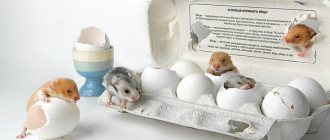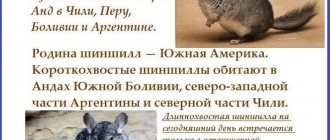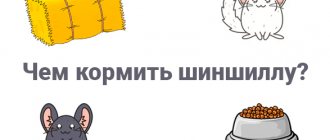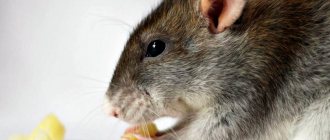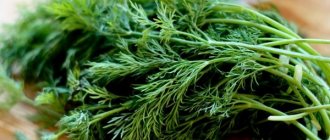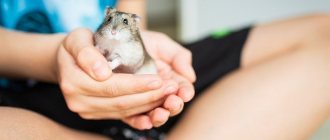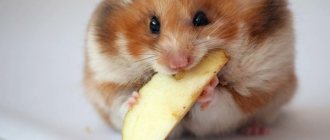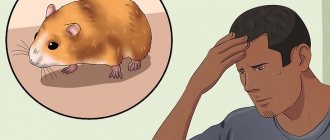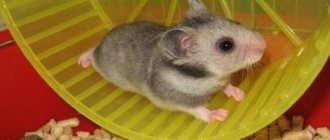Hamsters have become one of the popular caged animals. These little creatures come in many varieties, but some of the most famous are the Djungarian and Syrian hamsters. To keep a furry pet you only need a cage, a bowl and a drinking bowl. But careful care is also needed, feeding hamsters is an important part of caring for them so that they have good health and live a long life within their limits.
Hamster diet
The Syrian hamster is fed 2 times a day, morning and evening. Typically, Syrian hamsters will eat a tablespoon of their diet, but it all depends on the size and activity of the hamster. You can also periodically give pieces of fruit and other treats to your hamsters. At the same time, it is very important to monitor how much food the hamster can take in. If there is more food than he can eat, then the pet will make deposits for his food. It is worth making sure that the food does not start to rot; if this happens, then you need to remove these supplies in a timely manner.
Djungarian hamsters feed once a day. The feeding time of the hamster should be set in the morning or evening, and be sure to feed at the same specific time. Despite their small appearance, Djungarian hamsters are supposed to be given one tablespoon of food or cereal mixture.
What products are allowed and not allowed?
Proper nutrition for a Syrian hamster, like any other, should be well thought out, balanced, as complete as possible and as varied as possible. He eats almost everything, but there are quite a large number of foods that are completely contraindicated for him.
Cereals
In the daily diet of the Syrian hamster, cereals constitute the base (at least 30%), which cannot be replaced by anything. You can give:
- Buckwheat – preferably dry or soaked in warm water for 10-12 hours, but you can also boil it (in water);
- Wheat – best sprouted or cold soaked. Dry grain is poorly absorbed by the Syrian hamster;
- Oats – flakes (rolled oats) and grains (unpeeled if possible) are allowed. Sprouted oats are very useful for hamsters;
- Lentils - can be in any form (boiled and natural dry);
- Barley, slightly steamed;
- Barley, without hull.
It is not recommended to feed your Syrian hamster the following cereals:
- Rice is a heavy food that does not contain anything useful.
- Semolina – promotes weight gain, and contains practically no useful substances and microelements; it is an empty refined cereal.
- Millet - if you give it, then only unpeeled (millet) and a little.
Muesli should not be given to Syrian hamsters. In addition to cereals and pieces of fruit, they contain a lot of sugar, which is harmful to the health of rodents.
Vegetables
Both fresh and boiled vegetables have an important place in the daily diet of the Syrian hamster, but in fairly small quantities (40-50 g). Will be useful:
- pumpkin, zucchini, eggplant;
- radishes, turnips, carrots, beets;
- cucumber, sweet pepper (paprika);
- tomatoes (rarely, a couple of times a week);
- green beans.
All vegetables must be thoroughly washed and skinned (preferably). You cannot give rotten and stale fruits to Syrian hamsters, because then poisoning is guaranteed.
Preference is given to crops grown on your own plot, because store-bought products are grown using chemicals that are harmful to hamsters, and sometimes even deadly.
Prohibited, may cause harm to health with fatal outcome:
- onion garlic;
- cabbage;
- sorrel;
- radish, potatoes.
Fruits and berries
It is undoubtedly useful and even necessary to feed the Syrian hamster with fresh fruits and sometimes berries. After all, they are extremely rich in nutrients, various minerals and vitamins required for the normal functioning of the body. Useful and recommended:
- apples (12-15 g daily) fresh and dried;
- bananas (1-2 times a week, 8-10 g) fresh and dried;
- fresh pears (10-12 twice a week), dried (every 10-14 days, 5-6 g);
- peach, apricot, nectarine (1-2 times a month, 5-6 g);
Berries are relevant in a hamster’s diet, but they are added rarely and little by little (half or a whole berry once a week):
- blackberries, raspberries;
- strawberries, wild strawberries;
- blueberries;
- rowan;
- red and white currants;
- gooseberries, lingonberries, blueberries, grapes and cherries, sweet cherries (necessarily seedless).
The following are prohibited:
- any citrus fruits (pamelo, orange, tangerine, etc.);
- exotic fruits from the tropics (coconut, kiwi, pineapple, etc.);
- melon watermelon;
- sea buckthorn, barberry;
- pomegranate seeds.
Dairy products
Sweet dairy products, as well as those containing dyes, flavors and other synthetic additives, are strictly prohibited for Syrian hamsters. They can only:
- low-fat cottage cheese - twice a month in small portions (10-15 g);
- yogurt - once a month;
- cheese with the lowest fat content (1%) - 5-6 g once a month.
Due to the increased fat content, it is harmful to give hamsters:
- milk, sour cream, cream;
- butter, yogurt, kefir;
- cheeses, also with mold.
An adult hamster's body cannot digest milk. This product is necessary only for pregnant females, orphans left without a mother, and individuals weakened by illness.
Other products
The protein component is extremely important in the diet of the Syrian hamster; they are given this food 2-3 times a week (15-20 g each). As an addition to the main menu use:
- boiled chicken (without skin and fat);
- lean meat;
- eggs (preferably quail);
- boiled fish (boneless and lean);
- insects (ants, worms, flies, grasshoppers, etc.), sold only in pet stores;
- freshwater crustaceans, gammarus.
Legumes (chickpeas, beans, peas) contain a lot of protein. They are given boiled or soaked.
Hamsters are very fond of various nuts and seeds; they often choose them from the food mixture, leaving everything else in the bowl. But, since they are very fatty, you can’t give them a lot (no more than 1-2 pieces are allowed every 10-15 days), you can:
- shelled walnuts, peanuts;
- hazelnuts (with the permission of the veterinarian);
- cashews, pine nuts;
- sesame;
- sunflower, pumpkin and watermelon seeds.
Extremely undesirable and sometimes even deadly for Syrian hamsters:
- brazil nut;
- almond;
- acorns.
In the daily menu compiled for the Syrian hamster, a significant part should be fresh green food. Allowed useful plants:
- Garden greens: lawn grass (only bluegrass is allowed), vegetable tops (turnips, beets, carrots), parsley, celery, dill, lettuce;
- Weeds: young growth of nettle, dandelion (leaves without a central vein, strong choleretic, not too much), wheatgrass;
- Medicinal plants: knotweed, petals of rosaceae (rose hips, roses, etc.), plantain;
- Forage crops: wheat or oat sprouts, alfalfa, clover, alfalfa.
- Young leaves of garden fruit and berry crops and some trees: pear, apple, birch, cherry, willow, maple, etc.
- hay (in winter).
Hamsters should not be given all greens indiscriminately; some plants should never be given:
- sorrel, potato tops (and sprouts);
- wormwood (can only be done as directed by a veterinarian);
- mint, tarragon and other herbs;
- regular street grass.
Greens should be collected only in clean places, as far away from highways and busy roads as possible. Before use, the herb should be thoroughly rinsed in running water and dried.
To grind down the front teeth, which constantly grow throughout their lives, the Syrian hamster must be provided with branches of tree crops:
- birch, maple, poplar;
- ash, willow, oak, beech;
- apple trees, pears, cherries.
It is forbidden to give hamsters twig material from coniferous crops, they are harmful to rodents (as they are resinous).
Also, the following products are completely contraindicated for hamsters:
- flour, bakery;
- sausage products;
- salty and sweet (especially chocolate);
- food from the common table;
- pasta (dry);
- canned food;
- smoked, fatty, spicy and spicy.
What can hamsters eat and what can’t hamsters eat?
It is important to have an idea of what you can feed hamsters, what fruits, vegetables or other types of foods can be given, and which are strictly prohibited or undesirable for your furry pet. Many owners give cabbage to their rodent, but only a few know that cabbage is harmful to the hamster’s digestion.
In addition to cereal mixtures and special foods, it is advisable to treat your pet with cereals, fruits, nuts, berries and dried fruits. Hamsters' food must contain a range of nutrients and vitamins. They provide essential vitamins and other beneficial substances.
What to feed hamsters:
- Carrots, broccoli, banana, cherries, currants (black/red), gooseberries, leeks, parsley, dill. These food sets contain vitamin A, which promotes the growth of new cells and has a positive effect on bones, fur and vision.
- Sunflower seeds, oatmeal, oats, peas, buckwheat, wheat, cashews, walnuts. Vitamin B affects the efficiency of digestion and has a good effect on the nervous system.
- Banana, apple, cherry, gooseberry, currant, blueberry, rose hip, radish, parsley, dill, dandelion leaves. These products contain vitamin C, which strengthens the immune system, promotes bone growth and cell repair.
- Sunflower seeds, cashews, wheat, barley, wheat and oatmeal, oats, walnuts, dill, dandelion leaves. These substances contain vitamin E. It is necessary for good blood circulation and muscle function.
List of prohibited products
What is strictly forbidden to feed a hamster:
- spicy, salty, smoked and canned foods;
- any spices;
- citrus and exotic fruits (lemons, oranges, tangerines, grapefruits, avocados, etc.);
- onion garlic;
- cabbage;
- potato;
- watermelon;
- mushrooms;
- sweets.
The list of prohibited herbs includes cereal leaves and dandelion. The sharp serrations on these leaves can injure your hamster's cheeks. Dandelion should not be given because of the milky juice.
Hamster food
Hamsters' diet should not be limited to cereals and fruits. Pet stores have a large variety of foods for pet hamsters, but not all of these foods may be beneficial for your little friend. A couple of signs that the food is not suitable for feeding hamsters:
- It is important to first inspect the packaging. It must be sealed and not damaged. If it does not meet this requirement, then moisture may get into the feed, thereby creating the possibility of rotting. Compound. The diet should not contain a large amount of seeds, any foreign fruits or vegetables, or a high ratio of dried chicken or fish. Also, the composition should not contain a lot of fat and the food should not contain prohibited ingredients.
- Food for hamsters can be either universal or for a specific type of hamster. When choosing food, it is important to take this fact into account, because the diet may not have enough or an excess of the vitamins that your pet needs.
Vitamin storehouse
Hamsters readily eat vegetables and fruits. And if in the selection of a vegetable diet it is necessary to exclude potatoes, cabbage, onions, garlic and zucchini, then when choosing fruits to replenish the supply of vitamins in the body of the “fluffy”, you must adhere to some rules:
- It is advisable to feed hamsters not with exotic fruits, but with locally grown fruits;
- fruits that are too sour are dangerous for “fluffies”;
- fruits must be selected that are ripe, but without rot;
- Such food should be present in your pet’s diet no more than 1-2 times a week.
In addition, the diet of Djungarian hamsters is somewhat different from how the “Syrians” eat. Dwarf species are more prone to diabetes, so they should prepare fruit dessert less often than Syrian rodents.
The diet of the Djungarians is slightly different from the diet of the Syrians. Dzungarians are prone to diabetes, so they can receive fruit much less frequently than Syrians.
Cooking food for hamsters at home
Buying special food is not the only way to feed your furry pet. What to feed hamsters at home? You can make mixtures of grains and dried fruits, feed them with cereals and fresh fruits. There are many recipes for feeding Syrian and Djungarian hamsters.
Mixture of grains “Hamster happiness”. A simple recipe where you need to calculate the ingredients and mix everything. It is very important to monitor the dosage:
- 250 gr. chopped dried apricots.
- 250 gr. dried apples.
- 250 gr. raisins
- 200 gr. pumpkin seeds.
- 100 gr. sunflower seeds.
- 400 grams of barley.
- 300 gr. buckwheat
- 400 g millet.
- 800 gr. wheat.
What can you feed hamsters and what not?
What diet for a pet hamster is considered balanced and correct? What should he be given daily, what is best to limit, and what should he not be fed?
If you feed your hamster everything that you bought for him at the market or in the supermarket, you are definitely risking his health. After all, you don’t know where the saleswoman got the green salad or carrots on the counter, and you also don’t know how the vegetables were processed before they arrived at the store. And if vegetables and fruits were fertilized with substances that are very harmful in their chemical composition, or they were grown next to a dusty, dirty road.
That is why the safest food for your pet is only that which you or someone you know has grown in your own garden.
Fact! Every year, 2 adult hamsters die from cucumbers or salads treated with chemicals.
The most vital food for small domestic rodents is, of course, any grains, dry food and cereals. It is better to buy boxes of dry food with additives in stores that specifically sell dry food and food for animals.
Be sure to include in your hamster's daily diet:
- Pea, barley, rolled oats, wheat, millet, oatmeal, corn and lentils
- Protein food consisting of: low-fat dairy products (one percent fat content is allowed in regular yogurt, without additives, kefir and cottage cheese); chicken meat; river fish and shrimp; quail or fresh chicken eggs; insects, gammarus, grasshoppers and dried worms from a zoological store.
- Additional food - wheat and oat ears, dried hay. In order for the hamster to have the opportunity to grind down his teeth in the cage, you should place a twig of any fruit tree or a birch twig.
- Fresh dill, lettuce leaves, parsley or clover.
- Minerals along with vitamins. We advise you not to buy vitamins individually in specialized stores, but rather take a package with mineral supplements. However, before you give your pet vitamins, monitor the animal’s reaction: will he like them? There are hamsters that cannot stand this or that vitamin. If there is an urgent need to support the health of a small pet, it is better to grind the vitamins into powder and add them to the main liquid food, or mix them with fruits and vegetables. Be careful not to overfeed your hamster with vitamins, otherwise he may develop various diseases due to side effects. Please note that recently, each pet store has been selling special wheels for rodents to help the animal grind its teeth.
- Fresh water. Drinking is vital for any animal, just as it is for humans. There is no water in cereals and grains, so a domestic hamster, which spends most of its life in a cage, definitely needs water.
To feed your hamster if diarrhea or constipation occurs, you can give:
- Cereals boiled in water. Before cooking the cereal, it should be soaked in water in advance.
- Rice boiled in plain water. It helps the hamster with diarrhea and intestinal disorders.
- A drop of sunflower oil is added to the basic diet for constipation.
What can you give your pet hamster in small doses:
- Several vegetables and fruits, except cabbage of any kind, exotic fruits, beets.
- Sweet dry, unsalted popcorn.
- Any nuts - walnuts, hazelnuts or sesame.
Treats for your hamster
Despite the fact that hamsters only need a mixture of grains and periodic treats in the form of fruits or berries in their diet, there is a desire to diversify their diet with a pleasant treat. Treats for hamsters can be bought at the store, they are called drops, and there are also ways to make them yourself.
Banana sticks
To make a banana stick you need to cut a small piece of banana, mash it in a bowl, add any grains, you can also add some seeds, mix well together. Roll the finished mass into a bar. Leave in a warm place overnight, or you can also put it in the microwave for a minute to let the mixture set. The stick should be semi-solid.
Fruit treat
To prepare this delicacy for one hamster you need:
- Grape berry.
- Raspberry berry.
- Apple slice.
- A teaspoon of honey.
- A mixture of cereals and seeds.
Berries and an apple slice must be peeled and seeds removed and made into a soft mass. Add honey to the resulting substance; you need to round it and roll it in a mixture of cereals. Afterwards, the spherical treats should dry out, after which the sweet treat goes to the hamster.
What does a rodent eat in nature?
In the wild, the animal’s diet depends on its habitat. These are mainly grain crops, so rodents live, mainly in fields. In drier areas there is more dry food, in wetter areas there is more lush grass, leaves and other greenery. Rodents often raid places where grain, vegetables and other products are stored in rural houses and dachas. Rodents replenish their protein reserves by eating beetles, spiders, worms and caterpillars. They do not disdain the meat of another wounded small animal.
Canned food
Canned food cannot be fed to domestic rodents, because they contain harmful sugar, salt, hot vinegar and spices. In addition, some preparations are very fatty (vegetable caviar, winter salads).
Under no circumstances feed your furry friend canned and fried vegetables, jams and compote berries. At best, such food will upset digestion, at worst, it will provoke a stomach ulcer or the appearance of tumors.
Fresh fruits will help strengthen the hamster’s body, preserve its eyesight and the beauty of its fur. However, a balance in nutrition should be strictly observed: vegetables should be given along with animal food and dry food, and not instead of them. It is important to keep food fresh and wash it before putting it in your hamster's bowl.
What can you give from fruits?
The list of fruits that have the right to exist in a hamster’s diet can without any fear include an apple and a pear. With great care, small rodents can be given such juicy fruits as plum, cherry plum, apricot, and peach. Experiments with dates, quinces, figs, persimmons, bananas, passion fruits, papaya, mangoes and other overseas delicacies are even less desirable. Food that is not typical for the climate zone in which the animal lives cannot be considered healthy, but with a high probability it threatens the development of allergic reactions and other unnecessary complications.
Important! One of the most common diseases of pet hamsters, surprisingly, is diabetes mellitus. It is not known whether the wild relatives of small rodents suffer from this disease, but the fact that one of the causes of the problem is an excess of sweets in the diet is an indisputable fact.
In addition, it is important to understand that the main danger that any fruit poses is its sweetness. Sugar is contraindicated for hamsters, and the prevailing opinion that this ban does not apply to fructose and glucose is a dangerous misconception. However, too acidic foods pose no less danger to the hamster’s delicate digestive tract, which is why pampering your pet with a slice of orange, tangerine, grapefruit or pineapple is an unjustified risk.
Even if apples and pears are allowed, as a general rule, it is better to choose, if possible, a neutral taste - not very sweet and not very sour. And again, it is important to remember that excess fiber, which, in addition to vitamins and minerals, is traditionally considered the reason for the value of fresh vegetables and fruits, can do more harm to the hamster than good, causing the pet to have severe diarrhea and, as a result, dehydration , and possibly death.
Video: what fruits can be given to hamsters
Is it possible to give dried fruits?
The situation with dried fruits in the diet of a domestic hamster is also ambiguous. Thus, it is better to give apples and pears to animals in the form of drying, especially in winter, when the fruits sold in stores are expensive and their origin is questionable. Another acceptable product is rose hips, but in very small quantities. But those fruits that contain a large amount of liquid when fresh are better to immediately classify as prohibited and do not experiment with them.
The fact is that drying from the point of view of the technological process is the evaporation of the main amount of moisture from the product (dehydration) with maximum preservation of all other elements of the chemical composition. Thus, dried fruit contains almost the same list of nutrients as fresh fruit, but only in greatly increased quantities per unit of volume or mass. From the above, in turn, it follows that if fresh fruits are dangerous for hamsters due to their high sugar content, then dried fruits become a real threat to the life of the animal.
Important! Each new vegetable should be given to the animal for testing separately from other baits in order to be able to notice a negative reaction in time and, if it occurs, exclude this product from the diet.
The biggest problem is that hamsters simply love both raisins and dried apricots. That is why many owners of such pets are happy to pamper the animals with their favorite delicacy, while distributing false information among those who are just planning to purchase a small rodent about what they can and cannot do. It is not surprising that when problems with a pet’s health begin to arise, no one associates them with poor nutrition, trying to attribute their own mistakes to weak immunity, congenital diseases, bad luck and other similar reasons.
By the way, the situation is approximately the same with another delicacy adored by hamsters - nuts and seeds. Such fruits contain too much oil, and the gastrointestinal tract of rodents digests and absorbs fats with great difficulty. It is, of course, possible to treat your pet with a grain of peanuts, hazelnuts, cashews, a piece of walnut, a handful of sesame seeds, a few sunflower, pumpkin or melon seeds, but before that you should think carefully about whether we have the right to risk the health of an animal that trusts us in order to minutes to admire with what ecstasy he gobbles up a product that is harmful to him.
Syrian breed
The most common and no less intriguing type. Easy to train. Maintenance is not difficult. It has four toes on the front toes and 5 on the back. The largest of all types of domestic hamsters. Mainly has a golden color. An adult reaches a length of twelve centimeters. The body is plump like everyone else. In everyday life, animals often reach twenty centimeters. Males weigh one hundred twenty grams, and females one hundred and forty. Individuals twenty centimeters in length reach a weight of two hundred grams.
When leaving, the main factor is peace of mind. Under no circumstances should you take your pet out of its cage when there are many people in the room. The noise scares him, he begins to get nervous, and may bite or get sick.
How to prepare food?
Everything should be of the first freshness. Cook the food for up to ten minutes. Salt is prohibited; hamsters are not allowed spices. Everything should be fresh. If food is stale, it should not be given under any circumstances. In such supplies, tissue begins to rot and bacteria multiply. You may be poisoning your hamsters without knowing it. Moreover, you should not cut off part of the moldy fruit and give the rest to the animal. In the best case scenario, your pet will end up with diarrhea. You can offer only washed products.
Which vegetables should you include in your diet and which should you exclude?
For your pet's daily nutrition, it is recommended to include the following vegetables in its diet:
Article on the topic: Can a hamster have green and black grapes?
Dry food contains some dried vegetables. But this is not enough for a hamster’s complete diet.
Vegetables must be fresh and in season. If you purchase food in stores, then before using it as food for a rodent, vegetables should be soaked and then peeled, because they are often treated with chemicals for longer storage. Try to choose products that were grown without herbicides.
Some types of vegetables can be given both raw and cooked - carrots and beets, pumpkin and cauliflower. You need to cook for a short time without salt and spices.
It is enough to rinse vegetables with thin skin. But the pepper needs to be peeled and the seeds removed before giving it to a rodent.
Celery, cauliflower and Brussels sprouts can be included in the diet, but rarely and in small quantities.
Grinding down teeth
To grind down the front incisors, hamsters need to be given branches of young fruit or deciduous trees and shrubs - apple, pear, cherry, plum, birch, linden, maple, raspberry, currant, rose hip. The branches must first be washed and doused with boiling water.
It is forbidden to give hamsters branches of coniferous trees.
You can also suggest a mineral or chalk stone for grinding down teeth.
Rules for feeding dzhungariks
Owners of these funny hairy rodents need to remember that the animals' diet must be balanced, varied and consist of fresh, chemically safe foods.
The hamster has a fast metabolism, and during the day the hamster eats a volume of food equal to 70% of its body weight. In addition, this type of rodent is predisposed to diabetes and obesity.
These factors must be taken into account when feeding the animal.
Diet
There is no consensus on the diet of the dwarf dog among experienced breeders and veterinarians. Some recommend feeding the animal once a day, in the evening, since the hamster is nocturnal and is most active in the twilight hours. Others insist on giving food twice: after the pet wakes up in the morning and in the evening. Observe your hamster to determine the best feeding schedule for him.
For a long time it was believed that the hamster does not need water, since he is a resident of semi-desert areas and he gets enough moisture from juicy vegetables and fruits.
In fact, in nature, dungarians drink dew from the grass, albeit in small quantities. Therefore, it is necessary to give water to your hamster. Fresh filtered or bottled still water is suitable for this. Raw tap water is not suitable, because... contains many impurities, hardness salts and chlorine. Even boiling does not remove these substances.
The water in the drinking bowl is changed every day, and once a week the drinking bowl is thoroughly washed and disinfected.
Vitamins for dzungarians
Pet stores sell special vitamin preparations for hamsters. They are produced in the form of liquid concentrates and tablets. Please consult your veterinarian before purchasing these products. Manufacturers have already included vitamin supplements in many grain mixtures for hamsters.
Basic mistakes and how to avoid digestive problems
Errors in compiling a diet for dzhungarika arise due to insufficient knowledge of its species characteristics and the influence of various products on the animal’s body. And the desire to feed your pet food from the table leads to serious digestive problems in the rodent.
Vegetables
Vegetables are very healthy by nature, they have a lot of vitamins and fiber. But not everyone is suitable for the diet. Some can cause negative reactions in the body or even provoke an allergic reaction. Therefore, when creating a menu, be extremely careful.
Every day you can give:
- Carrots and peppers. They contain microelements that will greatly help in the prevention of age-related diseases. The high acid content will help weakened immunity.
- Peas and beans. They will give the hamster huge reserves of protein with vitamin B. They improve metabolism. Lots of other vitamins and minerals.
- Squash and cucumbers. They will restore the amount of fluid in the body, the peel will provide vitamins and microelements.
There should also be other vegetables on the menu, but there is no need to overdo it so as not to harm your pet. Pumpkin products can be given very rarely due to the higher amount of sugar.
What is it strictly forbidden to feed?
Regular cabbage or its stalk can cause diarrhea. Horseradish will consume a lot of water. If you include heads of garlic and onions in your menu, the chance of allergies will increase. Regular potatoes cause stomach problems, but they can be given boiled. When feeding, you need to chop everything very finely. Store in a cage for a maximum of six hours.
Plant food
Fruits in syrup, compote berries, and jam should not be offered to rodents. Any preserved food is prohibited because it contains sugar and salt. Raw seasonal fruits are preferred for feeding. Some of them are placed in the cage boiled (zucchini, beets, carrots, pumpkin). The cooking time in this case is minimal. The water is not salted.
If fresh fruits and vegetables are purchased at the store, it is better to cut off the skin (it often contains pesticides). For home harvest, this step is not necessary. Plant foods, including those from your own garden, must be thoroughly washed. After all, harmful bacteria and helminth eggs may remain on its surface.
All fruits must be fresh, not chapped, and free of rot. The pits of cherries, apples, cherries, plums, and apricots must be removed. The hamster can be poisoned by them. If a pear, pepper or other delicacy is cut into several pieces, the remaining pieces are stored in the refrigerator for several days.
It is important to remember that excessive fruit feeding causes indigestion and increased gas formation in hamsters, and increases the risk of diabetes and obesity. In small quantities, fruits help strengthen the immune system, improve intestinal motility, and are involved in the prevention of many diseases.
Article on the topic: What do hamsters like to eat most: treats, treats, store-bought and homemade treats
